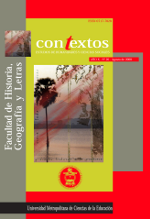Main Article Content
Apr 10, 2017
Abstract
En las décadas de los 60 y 70 se pensaba que la comprensión lectora era el resultado de un conjunto de habilidades que se desarrollan por separado. La taxonomía de Barret, de los años 60, tiene el mérito de presentarnos una categorización jerárquica de tales habilidades. Posteriormente, en los 80, surgen nuevos modelos, enmarcados en concepciones integradoras. En la actualidad, la lectura se entiende como un proceso interactivo mediante el cual el lector deduce información de un texto y la integra a sus esquemas globales. Las estrategias metodológicas para la ensñanza de la comprensión lectora son variadas y se clasifican en tres grupos: 1) Estrategias previas a la lectura comprensiva. 2) Estrategias durante la lectura comprensiva. 3) Estrategias posteriores a la lectura comprensiva. Pero la selección de las estrategias debe hacerse con criterio de flexibilidad, ya que en cada ocasión el docente es quien debe seleccionar aquellas que más convengan a la naturaleza de los alumnos y a las características del texto.
Downloads
Policies for open access journals
Authors who publish here accept the following terms: Authors will keep their copyright and will guarantee the journal the right to the first publication of their work, which will be subject to the Licence of Creative Commons acknowledgement, which allows for the use of this material only if the authorship is credited and the original source is acknowledged (the journal’s URL), and if it is not used with commercial ends and with any derivations of the original work.
Authors may adopt other non-exclusive license agreements of distribution of the published version (e.g. to save it onto a digital institutional archive or publish it in a monographic volume) only if the initial publication of this journal is indicated.
It is permitted and recommended for authors to divulge their work on the Internet (e.g. institutional digital archives or webpage) before and during the submission process, which may lead to interesting exchanges and increase the citations of the publication. (See Open Access Effect).






